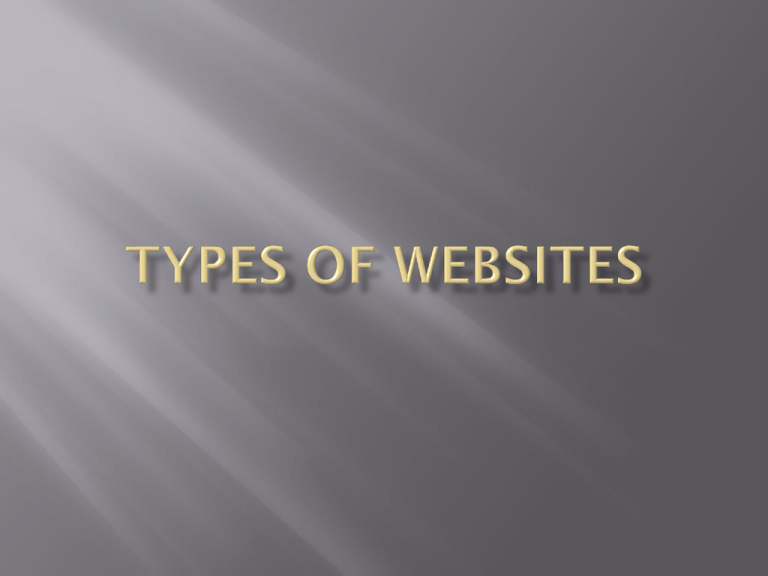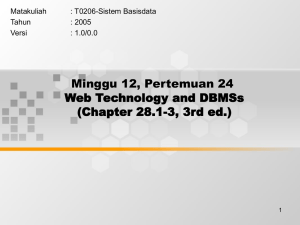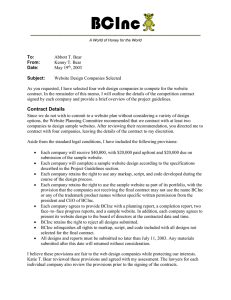Lecture 2: Types of Websites
advertisement

A website, also written Web site, web site, or simply site, is a group of Web pages and related text, databases, graphics, audio, and video files that are served up by a Web server to present information. A web page is a document, typically written in plain text interspersed with formatting instructions of Hypertext Markup Language (HTML, XHTML). A web page may incorporate elements from other websites with suitable markup anchors. The World Wide Web (WWW) was created in 1990 by CERN physicist Tim Berners-Lee. On 30 April 1993, CERN announced that the World Wide Web would be free to use for anyone. Before the introduction of HTML and HTTP, other protocols such as File Transfer Protocol and the gopher protocol were used to retrieve individual files from a server. These protocols offer a simple directory structure which the user navigates and chooses files to download. Documents were most often presented as plain text files without formatting, or were encoded in word processor formats. A static website is one that has web pages stored on the server in the format that is sent to a client web browser. It is primarily coded in Hypertext Markup Language, HTML. Simple forms or marketing examples of websites, such as classic website, a five-page website or a brochure website are often static websites, because they present pre-defined, static information to the user. This may include information about a company and its products and services via text, photos, animations, audio/video and interactive menus and navigation. A dynamic website is one that changes or customizes itself frequently and automatically, based on certain criteria. Dynamic websites can have two types of dynamic activity: Code and Content. Dynamic code is invisible or behind the scenes and dynamic content is visible or fully displayed. Offers a variety of Internet services Examples of services: News Sports Search engine/directory Web publishing Reference tools Maps Shopping Email Examples of portals: AltaVista, AOL, Lycos, MSN, Netscape, Yahoo! Contains newsworthy material Contain stories and articles related to some of the following: Life, money, current events, weather Examples: WSB-tv NBC.com Promotes or sells a product Many examples Offers exciting, challenging avenues for formal and informal teaching and learning Online training for a new skill Online courses Online college classes Examples UGA Phoenix University Interactive and engaging Offer music, video, games, sports, chats, sweepstakes Describes a cause, opinion, or idea Presents views of a group of people or organizations Short for webblog Time-stamped articles or posts, in a diary type format Vblog – a blog that contains video Blogosphere – worldwide collection of blogs Vlogosphere – all vblogs worldwide Reflect interest, opinions and personalities of the author Encourages members in the group to share interest, ideas, stories, photos, music, and videos with other users Popular examples: Facebook MySpace (12 million visitors a day) Media Sharing Web site – different Allows members to share photos, music, and videos ShutterFly, Flickr – popular sites GoogleVideo and YouTube are example for video sharing sites Private individual or family created People publish personal web pages for a variety of reasons: Job hunting Share personal experiences Family histories Most websites could fit in this type of website to some extent many of them are not necessarily for commercial purposes A website that indexes material on the internet or an intranet (and lately on traditional media such as books and newspapers)and provides links to information as a response to a query. Used to preserve valuable electronic content threatened with extinction. Two examples are: Internet Archive and Google Groups



